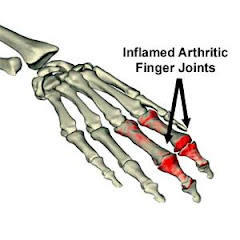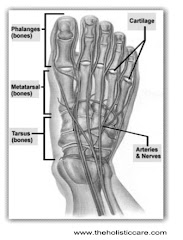Symptoms ARTHRITIS
Psoriatic Arthritis is a type of arthritic inflammation that occurs in about 15 percent of patients who
have a skin rash called psoriasis. This particular Arthritis can affect any joint within the body, with
symptoms that vary from person to person. Research has shown that persistent inflammation from
psoriatic Arthritis can lead to joint damage. Fortunately, available treatments are effective for most
people.
Fast facts
•Diagnosis is important to avoid damage to joints.
•Psoriatic Arthritis can precede skin changes caused by psoriasis.
•Physical activity helps maintain joint movement.
What is psoriatic Arthritis ?
Psoriasis is a disease in which scaly red and white patches develop on the skin. Those with psoriasis
can also develop psoriatic Arthritis Symtoms when the body's immune system goes into overdrive to attack the
skin disease, causing inflammation. Like psoriasis, psoriatic Arthritis Symtoms symptoms flare and subside,
varying from person to person, and even changing locations in the same person over time.
Psoriatic Arthritis Symtoms can affect any joint within the body, either in a single joint or in the same joint on
both sides of the body, e.g., one or both knees. Affected fingers and toes can resemble swollen
sausages, a condition often referred to as dactylitis.
Psoriatic Arthritis Symtoms in the spine, called spondylitis, causes pain in the back or neck, and difficulty
bending. It can also cause tender spots at sites in the body where tendons and ligaments join onto
bones. This condition, called enthesopathy, can result in pain at the back of the heel, the sole of the
foot, or other areas.
Recent research suggests that persistent inflammation from psoriatic Arthritis Symtoms causes joint damage
later so diagnosis is essential. Fortunately, treatments are available and effective for most people.
What causes psoriatic Arthritis Symtoms?
What causes psoriatic Arthritis Symtoms is not known exactly. Of those with psoriatic Arthritis Symtoms, 40 percent have
a family member with psoriasis or Arthritis Symtoms, suggesting heredity may play a role.
Psoriatic Arthritis Symtoms can also result from an infection that activates the immune system. While psoriasis
itself is not infectious, it might be triggered by a streptococcal throat infection.
Who gets psoriatic Arthritis Symtoms?
Psoriatic Arthritis Symtoms usually appears in people between the ages of 30 to 50, but can begin as early as
childhood. Men and women are equally at risk.
Approximately 15 percent of people with psoriasis develop psoriatic Arthritis Symtoms. At times, the Arthritis Symtoms can
appear before the skin disorder.
How is psoriatic Arthritis Symtoms
diagnosed?
To diagnose psoriatic
Arthritis Symtoms, rheumatologists look for swollen and painful joints, certain patterns of
Arthritis Symtoms, and skin and nail changes typical of psoriasis.
X-rays are often taken to look for joint damage. Other types of scans such as MRI or CT scans can also be used to look at the joints in moredetail.
Occasionally skin biopsies (small samples of skinremoved for analysis) are
taken, as well as blood tests to rule out other types of Arthritis Symtoms that cause similar signs and symptoms such as
gout and rheumatoid






